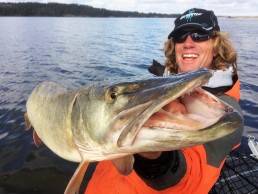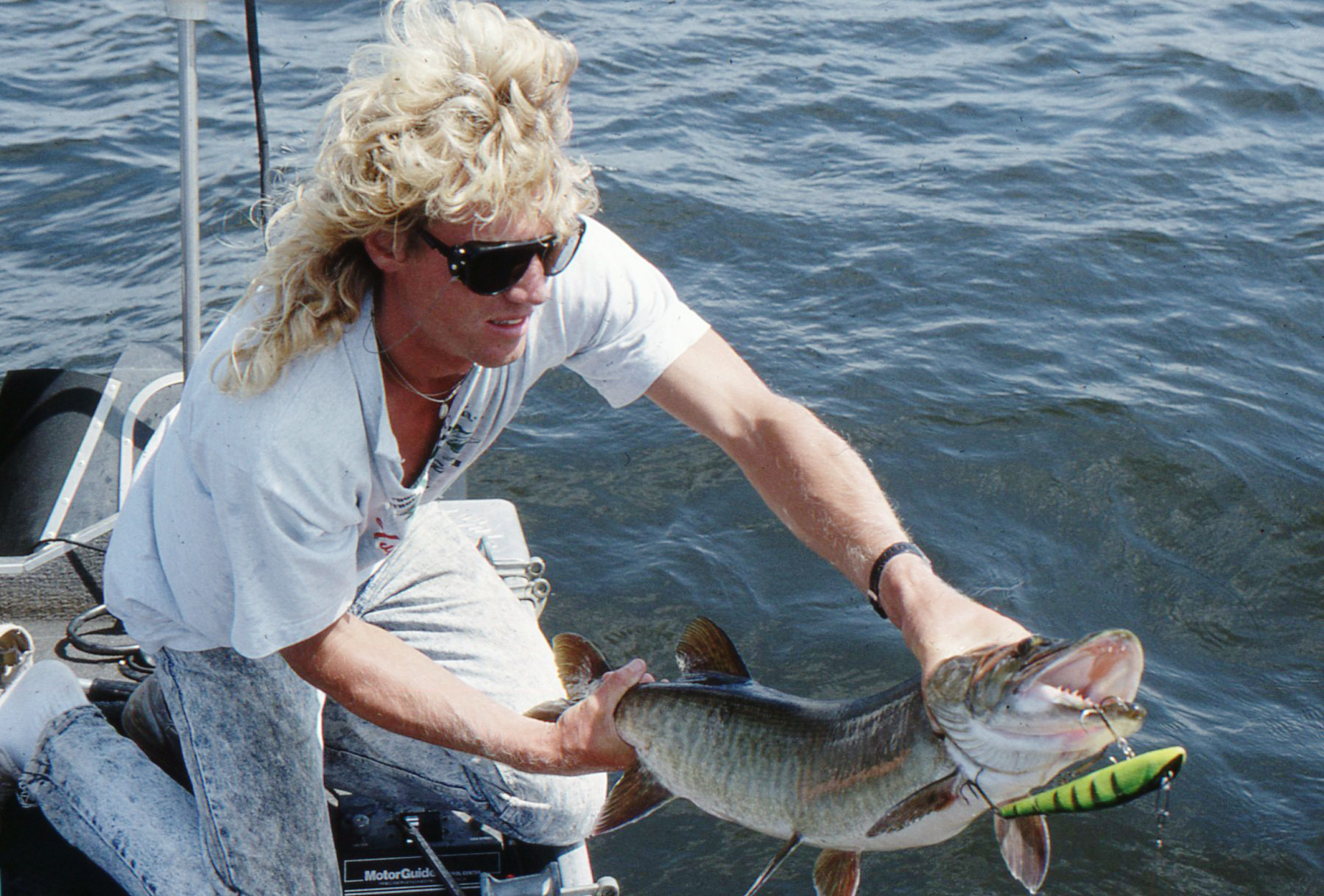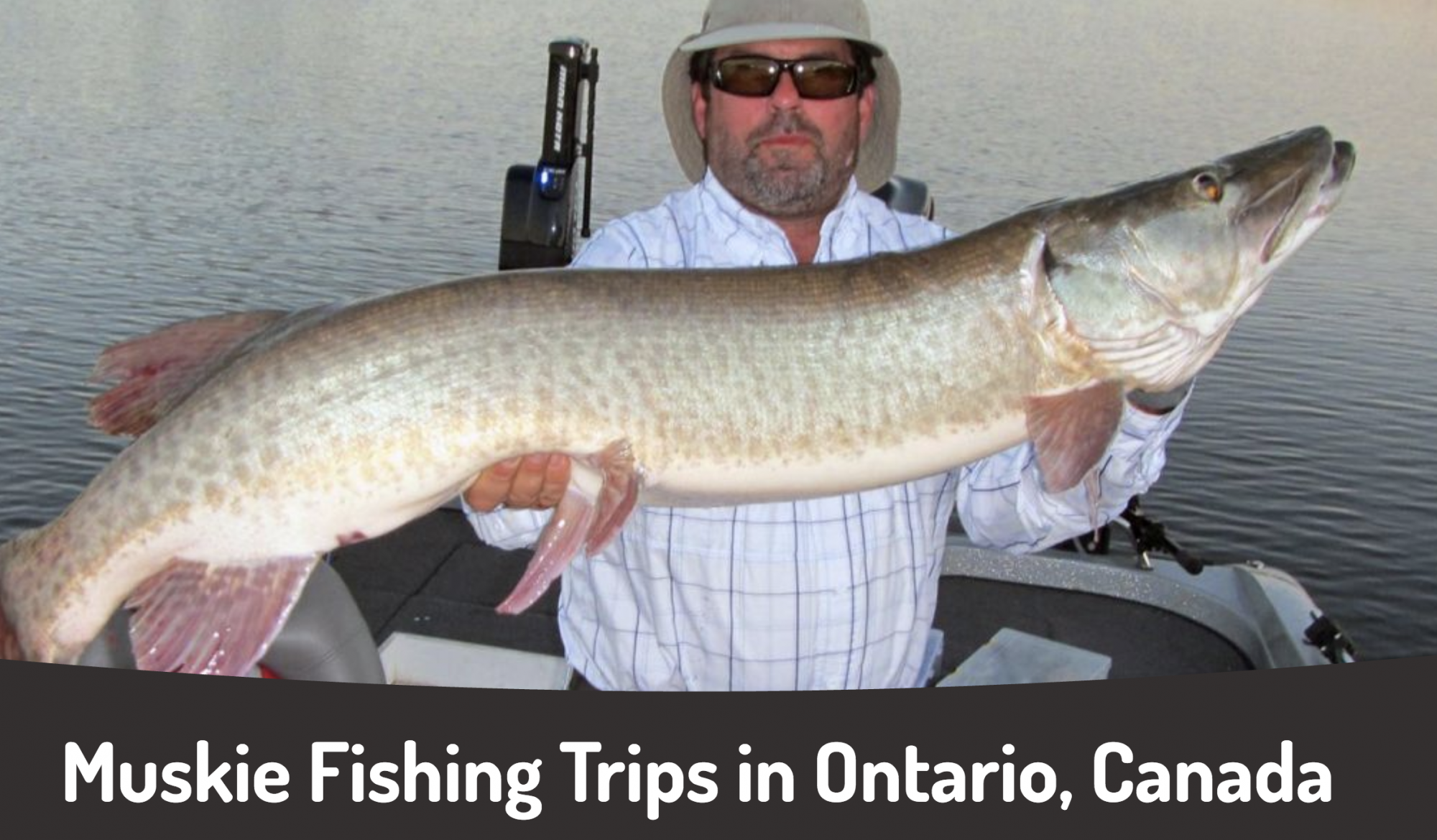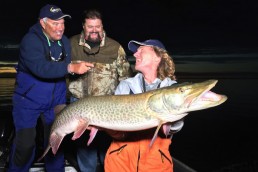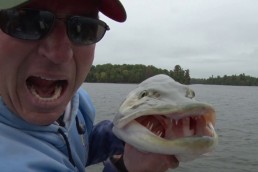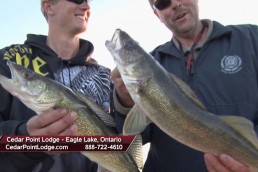Maina on Muskie and Northern Pike in Ontario’s Sunset Country
SHARE THIS POST
From his base in Hayward, Wis., fishing pro Pete Maina has been guiding people for muskies for almost three decades and has been a regular on broadcast television, including many appearances on “John Gillespie’s Waters & Woods.” Pete has also written for well-known publications such as “Outdoor Life” and “Game & Fish” and is known for his straightforward and animated approach in the boat and on camera. His focus is on learning patterns and behaviors of these big predators as the key to catching them. Visit PeteMaina.com for more information on Pete and his professional fishing career.
Sunset Country Executive Director Gerry Cariou recently sat down with Pete to discuss muskie and pike fishing on the Canadian Shield lakes in Ontario’s Sunset Country.
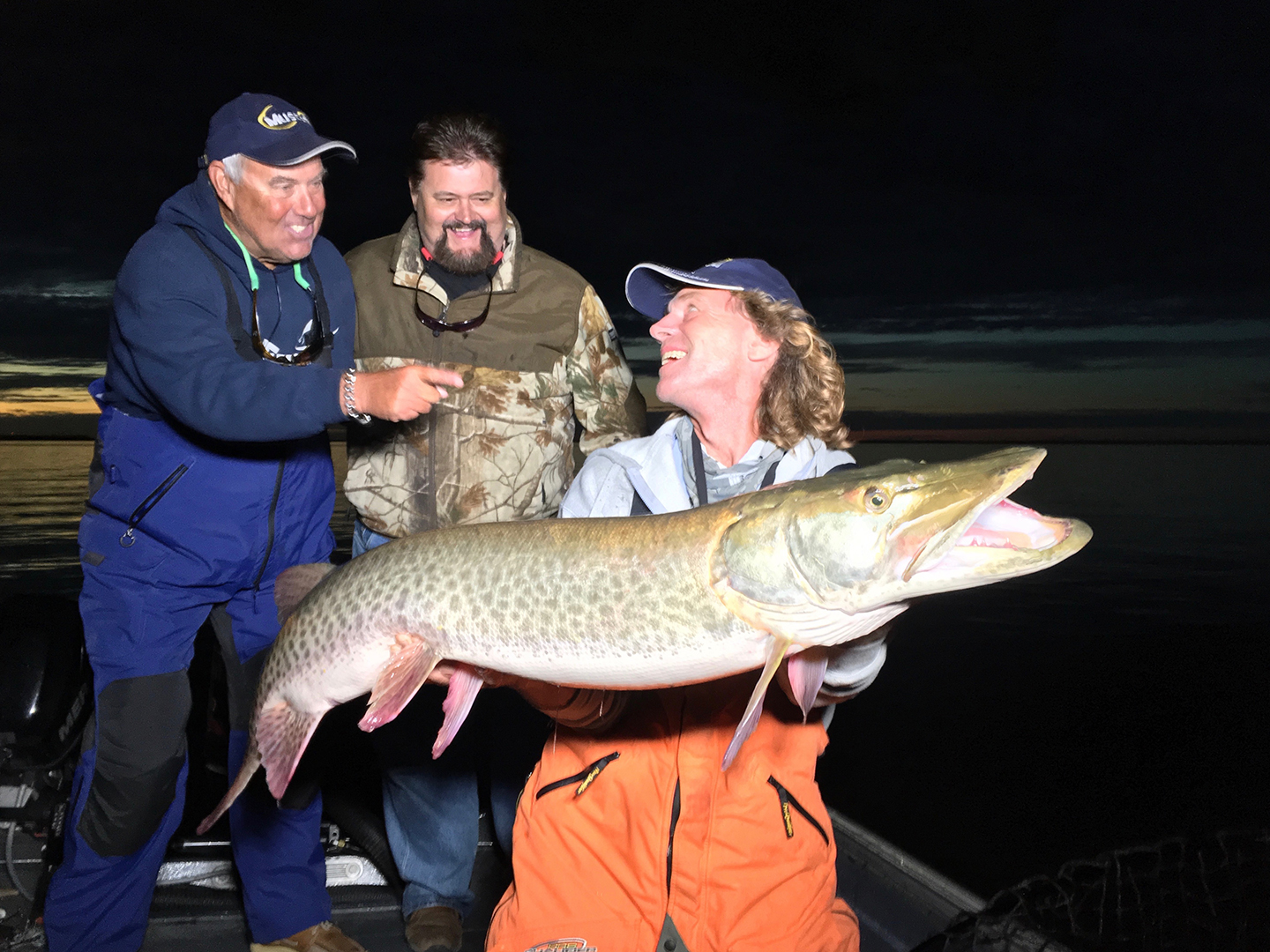
The Pete Maina Interview:
Ontario Sunset Country: Thanks for doing this Pete. Let’s start off with a comparison between muskie and pike. What makes them similar and what are their differences?
Pete Maina: Thanks Gerry, glad to be here. Outside of the fact they look like one another, including their body shape and color pattern, there are some significant differences. For one, pike spawn a lot earlier than muskie do and they like the cool, ice-out water. One of the best ways to catch northern pike, in fact, is to fish back bays just after the spawn––you’ll often find a big fish in there. Both fish are “broadcast spawners”––not tied to a specific bed––and both are aggressive while spawning––you just have to look at their post-spawn marks to appreciate that. Pike are also more successful spawners than muskie and, of course, are more common and easier to catch.
Ontario Sunset Country: From an angling perspective, what are the main differences in how muskie and pike behave?
Maina: I’d say one of the main differences is curiosity. Muskie will follow a bait because they’re curious with a low intention of striking it, while, in most instances, when a pike follows a bait, eating it and eating it quickly is usually the only thing on their mind. I think the fact that muskie hit on a Figure 8 maneuver is evidence they are curious creatures and are more prone to being enticed into a strike, whereas pike either go for it or they don’t. Pike tend not to mess around like muskie do––they mean business and they mean it all the time. I think that is why pike are much easier to catch and they usually will hit the bait with more speed and from cover. Muskie also tend to be night feeders, whereas pike like to feed more during the day. Pike are also clever, in that they will try to bury themselves in weeds or cover to escape, while muskie tend to just make a run without heading for cover.
Ontario Sunset Country: Both these predators behave differently at various times of the year. How do seasonal changes affect fishing for these big predators?
Maina: Time of year and overall conditions in their environment impact how these fish behave. During the spring––for both species–– you want to concentrate on catching them over soft bottom structure, close to emerging vegetation (where they were spawning). You’ll generally have better success than say, over rocky, main lake structure.
When mid-summer hits, I use a mix where, depending on conditions, I’ll fish both weed areas or rocks and I’ll even look to main lake structures and target deeper water––usually rocky shoals.
When the water temps cool down, I look to water where fish like tullibees will be spawning. In fall, I look to rocky, hard-bottom areas including shorelines and mid-lake reefs. Saying that, I’m not recommending you abandon areas with vegetation, since other factors, like water temperature and currents, affect their movements. The key is to experiment––don’t get stuck in a rut. Try something different if what you’re doing isn’t working. Be prepared to adapt. That’s the best advice I can give––especially for muskie anglers.

Ontario Sunset Country: Everyone likes to talk about equipment. What are the key tools of the trade every serious pike or muskie angler should have in their boat?
Maina: From a “must haves” perspective, I’d say baitcasting over open face reels will dramatically increase your efficiency and allow for more pinpoint casts. I prefer a super braid line with little or no stretch and a medium- to medium-heavy-action rod with a softer top half. The other key equipment is to have a proper landing net––bigger is better––and make sure the mesh is treated to protect the fish’s slime coating and to prevent fin splitting. Also, make sure your net has larger holes, so your baits don’t tangle as much; and I prefer rubber-coated mesh.
Ontario Sunset Country: Pike and muskie will both someties swallow the baits. How important is it to have the right equipment for getting the hooks out?
Maina: In addition to a good net, having a good pair of cutters, such as Knipex cutters, is imperative. Under all circumstances you want to extract the hooks quickly but carefully, and if they are embedded in a sensitive area, you need to cut them instead of trying to pull them out. For pike, jaw spreaders are very important. Every angler should also have spare hooks to replace the ones you cut off, as well as a pair of split ring pliers.
Ontario Sunset Country: For muskie, a key technique is the “figure-8” maneuver. What tips can you provide on landing a fish near the boat using this technique?
Are you enjoying this post?
You can be among the first to get the latest info on where to go, what to use and how to use it!
Maina: I think the biggest mistake people make on the figure 8 is cutting the corners too sharp. Your figure 8 should have a wide loop to it and should be faster than your retrieve speed. If going faster doesn’t work, try a dead stop in the middle of the maneuver––it may cause a muskie to strike.
Ontario Sunset Country: Knowing the baitfish and their patterns are often key to catching muskie on Canadian Shield lakes. What tips can you provide regarding baitfish?
Maina: Yes, that’s true. I like to look for areas where baitfish congregate in large numbers. I call it the “refrigerator” in the lake––big muskie and pike tend to go look for something to eat in the refrigerator where the food is readily available and in large numbers. So, if you pay attention to the bait balls when muskie fishing, you will often find a muskie or pike in the vicinity. If bait is really concentrated, the predators will be located along the edge, so cast there. Do not target the middle––target the outside edge.
Ontario Sunset Country: Weather patterns can dramatically affect how muskie and pike behave. How do you adjust your fishing techniques to the weather?
Maina: This is one of the most important factors anglers need to consider. If you know, for example, that a front is moving in the next day, fishing ahead of it will often mean success––both muskie and pike are more active before a front moves in. Once the front is in place fish are more sluggish, so slow down your retrieve and work your baits tighter to structure, like rocks or weeds. On those hot, dead-calm mid-summer days I tend to do the same thing as I do post-cold front––I slow down my retrieve.
The amount of difference between the air and water temps affects the fish behavior the most, so a cold front in the late fall is not as big a deal for fishermen as it may be in mid-summer. An extreme heat front in the fall is actually worse than a cold front. Again, don’t be afraid to adjust your technique and approach to try something different. Since these fish prefer “normal” temperature transitions to abrupt changes, you have to think harder and try different approaches with a sudden change in the weather.
I think windy days with big choppy waves can be advantageous to the angler. So, when the wind is blowing, I tend to fish the windy side of an island or piece of structure, and I like to target the break area where the calm water meets the chop––it’s a transition zone that can sometimes harbor a big fish.
Ontario Sunset Country: When it comes to muskie fishing, people make a big deal about moon phases. What are your thoughts on this?
Maina: In my opinion, the moon phase connection to muskie fishing is a little overrated. To me, weather conditions are what really matter and trump the moon effect every time. So, I don’t pay much attention to moon phases when I have volatile weather with lots of barometric pressure change. I do pay attention to when the moon rises and sets during steady weather – that’s when the moon really matters. Days with steady pressure are when the moon is most important, although I’m not sure exactly why.
Ontario Sunset Country: What are your tips for the safe handling and release of large pike and muskie?
Maina: Knowing what to do and doing it quickly should be important to everyone who fishes for these predators. Keeping the fish in the net and in the water are the most important things, especially in hot weather conditions. Do not keep a fish out of the water for more than 30 seconds. If hooks are deeply embedded don’t yank on them, cut them off instead. Water temperature is a huge factor here. Warm water stresses the fish and makes them extremely vulnerable. When it’s warm, minimize the “fight time” as much as possible and get the fish back into the water as soon as possible.
For more information on muskie and pike fishing in Ontario’s Sunset Country, go to visitsunsetcountry.com. You can also hear more from Pete Maina on the MidWest Outdoors podcast page.
For more on Sunset Country, click this link on Ontario muskie fishing.
MWO
SHARE THIS POST
Did you enjoy this post?
You can be among the first to get the latest info on where to go, what to use and how to use it!
MWO
We believe being outdoors is good. With more than 1,000 articles each year, MidWest Outdoors magazine is all about sharing outdoor experiences with you—where to go, what to use and how to use it… whether you’re close to home or on that trip of a lifetime.
